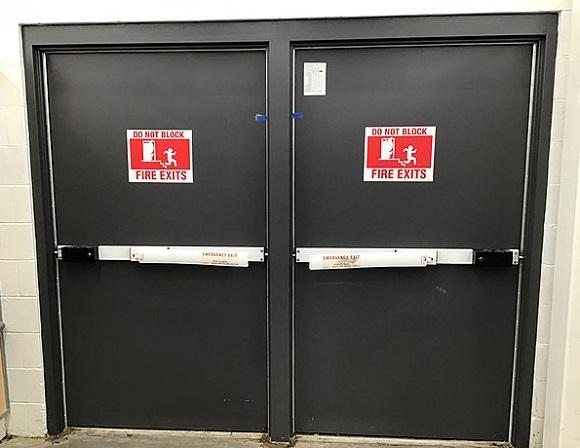Introduction
The importance of unblocked exit paths in the workplace cannot be overstated. In the event of an emergency, such as a fire or a natural disaster, having clear and accessible escape routes can mean the difference between life and death for employees. This article will explore the significance of maintaining safe exit paths, the regulations governing emergency exits, and practical solutions for fixing and ensuring clear escape routes in the workplace.
Understanding OSHA Regulations
The Occupational Safety and Health Administration (OSHA) is the primary regulatory body responsible for ensuring workplace safety in the United States. OSHA has established specific regulations related to exit routes in the workplace, which are designed to ensure that employees can safely evacuate in the event of an emergency. According to OSHA regulations, every workplace must have a minimum number of exit routes, depending on the size and layout of the building, as well as the number of employees. These exit routes must be permanent and unobstructed, with a minimum width of 28 inches to accommodate the simultaneous evacuation of multiple employees. Additionally, exit routes must be clearly marked with visible signs, and doors leading to exit routes must be free of locks or devices that could impede egress.
References:
- 1910.36
- https://www.osha.gov/laws-regs/standardinterpretations/2022-05-25
- https://www.osha.gov/laws-regs/standardinterpretations/2000-04-27
- https://www.osha.gov/sites/default/files/publications/emergency-exit-routes-factsheet.pdf
Identifying and Fixing Blocked Exit Paths
Blocked exit paths are a common issue in many workplaces, often resulting from a lack of awareness or negligence. To ensure the safety of employees, it is crucial to identify and address any obstructions that may impede escape routes. Some common examples of blocked exit paths include:
- Storing materials or equipment in front of exit doors or along exit routes.
- Using exit doors as a means of ventilation, which can lead to the accumulation of debris or other obstructions.
- Locking or chaining exit doors, which can prevent employees from evacuating during an emergency.
To fix blocked exit paths, employers should take the following steps:
- Regularly inspect exit routes for obstructions and ensure that all materials and equipment are stored in designated areas away from exits.
- Keep exit doors closed and refrain from using them for ventilation purposes.
- Remove any locks or chains from exit doors and ensure that they can be easily opened from the inside without the use of keys or special tools.
In addition to addressing existing obstructions, employers should also implement measures to prevent future blockages. This may include providing training to employees on the importance of maintaining clear exit routes and establishing a system for reporting and addressing potential hazards.
Emergency Evacuation Plans
Having an emergency evacuation plan in place is essential for ensuring the safety of employees during an emergency. An effective evacuation plan should include the following key elements:
- A clear and concise description of the evacuation procedures, including the designated exit routes and assembly points.
- A communication plan for alerting employees to an emergency and providing instructions on how to evacuate.
- A system for accounting for all employees after an evacuation, such as a designated meeting area or a roll call procedure.
- Provisions for employees with disabilities or special needs, including designated evacuation assistants and specialized equipment if necessary.
- Regular drills and training sessions to familiarize employees with the evacuation procedures and ensure their preparedness.
To create and implement an effective evacuation plan, employers should consult with local fire departments or emergency management agencies for guidance and recommendations. Additionally, the plan should be reviewed and updated regularly to account for changes in the workplace, such as new employees or alterations to the building layout.
Training and Communication
Training employees on emergency procedures, escape routes, and evacuation plans is a critical component of workplace safety. Employers should provide regular training sessions to ensure that all employees are familiar with the procedures and know what to do in the event of an emergency. Training should cover the following topics:
- The importance of maintaining clear exit routes and the potential consequences of blocked paths.
- The location and layout of designated exit routes, including any alternative routes in case the primary route is blocked or compromised.
- The procedures for evacuating the building, including the use of any specialized equipment or assistance for employees with disabilities.
- The designated assembly points and procedures for accounting for all employees after an evacuation.
In addition to formal training sessions, employers should also communicate emergency procedures and evacuation plans through various channels, such as posters, handouts, or digital resources. This will help to reinforce the information and ensure that employees have access to the necessary resources in the event of an emergency.
Regular Inspections and Maintenance
Regular inspections and maintenance of exit routes are essential for ensuring their functionality and safety. Employers should establish a schedule for inspecting exit routes and addressing any issues that may arise, such as obstructions, damaged signage, or malfunctioning doors. During these inspections, employers should look for the following:
- Obstructions or debris blocking exit routes or doors.
- Damaged or illegible exit signs or directional markings.
- Doors that are difficult to open or close, or that do not latch securely.
- Any changes in the workplace layout that may affect the functionality or accessibility of exit routes.
By conducting regular inspections and addressing any issues promptly, employers can help to ensure the safety of their employees and maintain compliance with OSHA regulations.
Case Studies and Lessons Learned
There have been numerous incidents where blocked exit paths have led to tragic consequences, highlighting the importance of maintaining clear escape routes in the workplace.
Triangle Shirtwaist Factory Fire of 1911
The Station nightclub fire occurred on February 20, 2003 during a concert by the band Great White at the Station nightclub in West Warwick, Rhode Island. The fire was started when pyrotechnics ignited flammable soundproofing foam on the walls and ceiling surrounding the stage. The foam was highly flammable and created thick, toxic smoke as it burned. Within minutes the entire club was engulfed in flames. 100 people died and over 200 were injured in the blaze.
Some key factors that contributed to the severity of the fire:
- Use of pyrotechnics indoors near flammable material
- Flammable polyurethane foam used for soundproofing
- Overcrowding – the club was over its legal capacity
- Lack of sprinkler system in the building
- Limited usable exits resulted in crowding at main entrance
Lessons learned to help prevent similar disasters:
- Ban pyrotechnics indoors unless special fireproof conditions met
- Require use of fire-resistant materials in nightclubs/venues
- Enforce legal capacity limits in clubs through inspections
- Mandate sprinkler systems in existing nightclubs and venues
- Ensure adequate, unblocked emergency exits are available
- Improve codes regarding alarms, exits, and fire-safe materials
- Provide better training for inspectors to enforce fire codes
The lessons learned from this tragedy underscore the need for multiple, clearly marked exit routes and the importance of regular inspections and maintenance to ensure their functionality.
Station Nightclub Fire of 2003
Another example is the Station nightclub fire in 2003, which claimed the lives of 100 people and injured over 200 others. In this case, the rapid spread of the fire and the ensuing panic led to a bottleneck at the main entrance, as many of the other exits were either blocked or inaccessible.
the Triangle Shirtwaist Factory fire in 1911 was one of the deadliest industrial disasters in US history. Here is a summary of what caused it and the key lessons learned:
Causes:
- The fire started accidentally in a scrap bin under a cutter’s table on the 8th floor. Smoking was banned but some workers still smoked on the sly. Fabrics and tissue paper scraps fueled the fast-spreading fire.
- The factory’s doors to the stairwells and exits were locked, a common practice at the time to prevent theft and unauthorized breaks. This prevented workers from escaping.
- The fire escape was shoddy and collapsed under the weight and heat.
- The fire department’s ladders only reached the 7th floor, leaving workers on floors above trapped.
Lessons:
- The unsafe factory conditions and management negligence contributed significantly to the tragedy. This spurred reforms to improve workplace safety, fire codes, and workers’ rights.
- It showed the need for better building access, fire escapes, fireproofing, sprinklers, and alarm systems in factories and high-rises.
- It propelled the growth of the International Ladies Garment Workers Union which advocated for improved factory conditions and workers’ collective bargaining powers.
- It led New York State to establish a Factory Investigating Commission which investigated hazards and recommended new workplace safety laws. Over 30 such laws were passed in following years.
- The public outcry inspired important state labor law reforms and changed attitudes towards government regulation to protect worker welfare.
In summary, the disaster revealed the dangerous factory conditions many workers endured and galvanized efforts to enact progressive labor laws and workplace safety standards that saved many lives in the future. The lessons learned from this tragedy underscore the need for multiple, clearly marked exit routes and the importance of regular inspections and maintenance to ensure their functionality.
By examining these case studies and applying the lessons learned, employers can take proactive steps to improve workplace safety and prevent similar tragedies from occurring in the future.
Conclusion
In conclusion, maintaining unblocked exit paths and ensuring safe escape routes in the workplace is a critical aspect of workplace safety. By understanding and adhering to OSHA regulations, implementing effective emergency evacuation plans, providing regular training and communication, and conducting inspections and maintenance, employers can help to protect their employees and create a safer working environment.
Sources:
- OSHA Emergency Exit Routes Factsheet: Emergency Exit Routes Factsheet
- OSHA Regulations on Exit Routes: 1910.37 – Maintenance, safeguards, and operational features for exit routes
- OSHA Requirements for Workplaces Exit Routes: OSHA requirements for workplaces exit routes
- Building Evacuation Procedures: Building Evacuation Procedures
- NFPA Emergency Exit Door Requirements: Understanding the NFPA Emergency Exit Door Requirements
- Exits and Exit Routes: Exits and Exit Routes
- How to Plan for Workplace Emergencies and Evacuations: How to Plan for Workplace Emergencies and Evacuations
- No Way Out: Dangers of Blocked Exit Routes: No Way Out: Dangers of Blocked Exit Routes
- Emergency Exit Route Safety Requirements in the Workplace: Emergency Exit Route Safety Requirements in the Workplace
- Back to Basics: Emergency Exits and Keeping the Way Out Clear: Back to Basics: Emergency Exits and Keeping the Way Out Clear
- https://en.wikipedia.org/wiki/The_Station_nightclub_fire
- https://en.wikipedia.org/wiki/Triangle_Shirtwaist_Factory_fire










